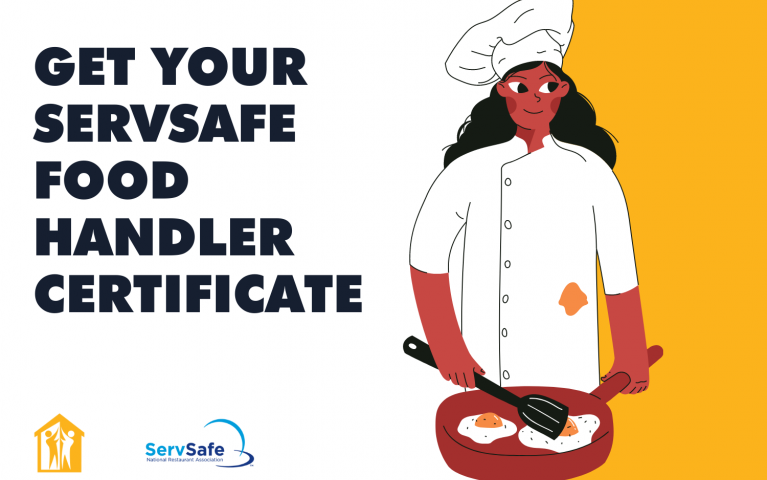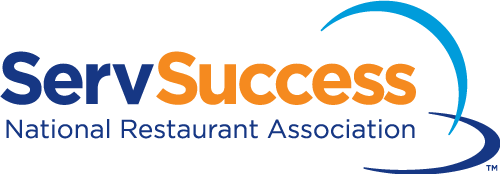Browsing the Requirements for the ServSafe Alcohol Certification: What to Anticipate
Browsing the Requirements for the ServSafe Alcohol Certification: What to Anticipate
Blog Article
Comprehensive Food Handlers Training for Health and Safety
In today's swiftly progressing food solution landscape, comprehensive food trainers training has become an essential component for guaranteeing health and security. By instilling necessary techniques associated to hand health, food storage, and cleanliness, this training not only minimizes the risk of foodborne illnesses however also enhances compliance with governing criteria. The effects of such training expand past plain conformity; they discuss public health and consumer depend on. Yet, the efficiency of these training programs can differ substantially. What variables absolutely establish their success in promoting a culture of safety?
Importance of Food Safety Training

Furthermore, food safety training helps to guarantee that staff members are mindful of existing guidelines and guidelines, which are vital for maintaining operational licenses and preventing costly penalties. Routine training sessions additionally offer as a system for strengthening finest techniques, thereby lowering the chance of human error, which commonly acts as a leading source of food contamination.
In addition, investing in food security training can improve a facility's credibility, as customers significantly prioritize eating experiences that show high safety criteria. Such aggressive steps not only shield customers however additionally add to the lasting success of food businesses. In summary, thorough food safety and security training is a crucial component of food solution procedures, straight impacting both public wellness and service sustainability.
Key Principles of Health
Keeping high criteria of hygiene is vital in any kind of food dealing with environment to stop contamination and make certain the safety and security of customers. The essential principles of hygiene encompass a number of crucial practices that food trainers must consistently use.
First, hand hygiene is extremely important; food handlers need to clean their hands thoroughly with soap and water prior to and after managing food, as well as after making use of the restroom or touching any potentially polluted surfaces. Secondly, devices and surface areas should be consistently cleaned up and disinfected to remove virus. This includes tools, cutting boards, and kitchen counters, which ought to be preserved in a tidy condition.


Appropriate food storage is additionally important; raw foods should be saved individually from cooked or ready-to-eat products to stay clear of cross-contamination. servsafe alcohol. Additionally, preserving ideal temperature level controls is vital; perishable products ought to be maintained risk-free temperature levels to inhibit bacterial development
Lastly, individual health can not be forgotten. Food trainers must wear tidy garments, usage hair restraints, and prevent functioning when ill. By sticking to these vital principles of health, food handlers can considerably decrease the threat of foodborne diseases and promote a safer eating experience for all customers.
Common Foodborne Ailments
Although numerous foodborne health problems can be stopped via proper health and secure food handling methods, they remain a significant public health worry. Foodborne pathogens can lead to a variety of illnesses, ranging from moderate intestinal distress to serious difficulties and even fatality.
Typical foodborne illnesses include salmonellosis, brought on by Salmonella bacteria, commonly connected to undercooked poultry and eggs. One more widespread illness is listeriosis, connected with raw milk products and ready-to-eat meats, which can be especially harmful for immunocompromised individuals and expecting females. Norovirus, frequently gotten from infected food or surface areas, is understood for its quick spread and ability to trigger episodes in common setups.
Escherichia coli (E. coli) infection, especially connected with undercooked hamburger and polluted produce, can result in extreme abdominal pains and kidney failing in some instances. In addition, Clostridium perfringens, often located in huge quantities of food that are improperly saved, can create food poisoning with symptoms showing up quickly after usage.
Comprehending these ailments is critical for food handlers, as awareness can substantially lower the risk of contamination and safeguard public wellness. Appropriate education and training are crucial parts in combating foodborne illness.
Finest Practices for Food Handling
Efficient food taking care of methods are crucial in preventing the spread of foodborne ailments. Appropriate hand health is crucial; food handlers have to wash their hands extensively with soap and water before and after managing food, particularly raw meat or fowl. This straightforward activity substantially reduces the risk of cross-contamination
Second of all, preserving ideal food storage space temperatures is critical. On a regular basis sterilize counter tops, reducing boards, and utensils, specifically after preparing raw foods. Usage different cutting boards for ready-to-eat and raw foods to further lessen contamination threats.
Additionally, when preparing food, it is very important to comply with the concept of "initial in, initially out" (FIFO) to handle supply properly and reduce perishing. Constantly read and adhere to food product labels for risk-free cooking temperature levels and managing guidelines. By executing these best methods, food handlers can dramatically boost food security and safeguard public health and wellness.
Executing a Safety And Security Culture
Developing a safety and security culture within a food handling atmosphere is vital for fostering a commitment to food safety amongst all team member. This society emphasizes the value of food safety as a shared duty, urging staff members to focus on health techniques consistently.
To implement a safety culture, companies need to start by giving comprehensive training that deals with food handling procedures, possible dangers, and here are the findings the relevance of individual health. Training sessions need to be interactive and customized to the certain roles of employee, ensuring importance and interaction.
In addition, leadership plays click to investigate an important function in establishing this society. Management must model safe techniques and interact the value of food safety consistently. Recognizing and rewarding workers who support safety criteria can further enhance these behaviors.
In addition, open communication channels need to be established, enabling team to report security concerns without anxiety of consequence. Normal safety and security audits and comments sessions can aid determine areas for improvement and reinforce responsibility.
Inevitably, cultivating a safety culture not only boosts compliance with food safety regulations however also shields public wellness, fosters staff member spirits, and adds to the total success of the food handling facility.
Final Thought
Finally, detailed food trainers training plays an essential duty in advertising health and safety and security within food service facilities. By gearing up workers with necessary knowledge about food safety and security concepts, usual foodborne health problems, and ideal techniques for dealing with food, such training substantially reduces health and wellness risks. Additionally, fostering a society of safety and security improves the establishment's credibility and straightens with consumer assumptions for high safety and security criteria, inevitably adding to public health and wellness defense and the total success of the food service sector.
In today's quickly advancing food service landscape, comprehensive food handlers training has arised as a critical component for making directory sure hygiene and safety.Food safety and security training is crucial for preserving high criteria in food handling and preparation, with studies indicating that appropriate training can lower foodborne health problems by up to 30%. In recap, detailed food safety and security training is an essential aspect of food solution procedures, straight impacting both public health and wellness and business sustainability.

Report this page